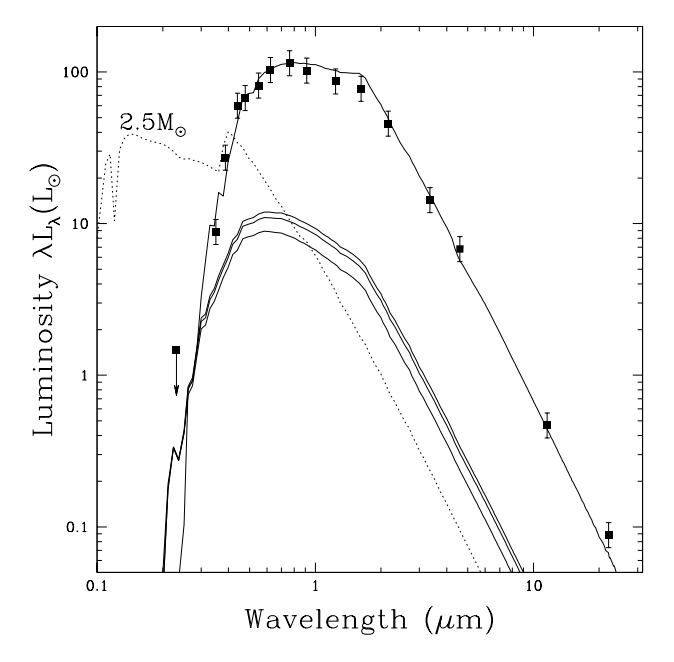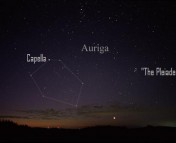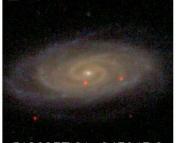Title: A Unicorn in Monoceros: the 3M☉ dark companion to the bright, nearby red giant V723 Mon is a non-interacting, mass-gap black hole candidate
Authors: T. Jayasinghe, K. Z. Stanek, Todd A. Thompson, C. S. Kochanek, D. M. Rowan, P. J. Vallely, K. G. Strassmeier, M. Weber, J. T. Hinkle, F.-J. Hambsch, D. Martin, J. L. Prieto, T. Pessi, D. Huber, K. Auchettl, L. A. Lopez, I. Ilyin, C. Badenes, A. W. Howard, H. Isaacson, S. J. Murphy
First Author’s Institution: Department of Astronomy, The Ohio State University, Columbus, Ohio
Status: Accepted for publication in MNRAS, pre-print available on the arxiv
Astronomers have detected a nearby, small, dark unicorn. And by that I of course mean they have discovered the closest, and one of the smallest, black holes on record.
The Curious Case of V723 Mon
V723 Mon is a nearby (d ~ 460 pc, 1500 ly) red giant star located in the Monoceros, or “Unicorn,” constellation. It is a known variable star that was first discovered by the Hipparcos mission. V723 Mon was originally classified as an eclipsing binary, which is a binary star whose brightness varies periodically as the two components pass in front of each other. However, a team of astronomers led by graduate student Tharindu Jayasinghe noticed something strange about the binary star system.
This system caught the authors’ attention because of the large binary mass function, which provides the minimum mass of the companion to V723 Mon. The binary mass function for this system implied that the companion had to be very massive, at roughly three times the mass of the Sun. The researchers concluded that the companion could not be a Main Sequence star of this mass, because if it were, the spectral energy distribution (SED) of V723 Mon would have a noticeable contribution at ultraviolet (UV) wavelengths (Figure 1). Instead, the authors decided to investigate whether the companion to V723 Mon is a compact object instead.

Finding Light in the Darkness
The authors analyzed archival data from KELT, ASAS, and TESS, and obtained new data from the ROAD telescope. They found that the light curves, which were observed at four different wavelengths, were all consistent with those of an ellipsoidal variable. This means that V723 Mon is tidally distorted by the gravity of the companion into a “football” shape, causing the light from the star to change in intensity throughout its orbit.
The researchers then fit the KELT and TESS light curves with PHOEBE modeling software. This allowed them to derive the orbital inclination and the masses of V723 Mon and its companion. The models indicate that the orbital inclination of this system is nearly edge-on at roughly 87±2 degrees. The models also show that the mass of the red giant is 1.00±0.07 M☉ and the mass of its companion is 3.04±0.06 M☉. The authors found similar results when they used a different binary modeling tool as well.
Using this modeling software, the authors ruled out single Main Sequence companions more massive than 0.80 M☉ and binary Main Sequence companions more massive than 1.51 M☉ (Figure 2). Since the companion was modeled to be roughly 3 M☉, it is too massive to be either a single or binary Main Sequence star. This means that it has to be a compact object! In their paper, the researchers examine various plausible scenarios for this dark companion, including various combinations of black holes, neutron stars, and white dwarfs. In the end, they determine that the simplest explanation is that the companion is a single, low-mass black hole.

Uncovering Unicorns
V723 Mon is now known to host the closest black hole. And as the companion to V723 Mon is only three times more massive than the Sun, this black hole is also one of the smallest on record. In fact, it falls into the mass gap between the smallest known black holes at roughly 5 M☉, and the most massive neutron stars at roughly 2 M☉. This companion is indeed a unicorn!
Jayasinghe and his team are now working to find even more unicorns in our galaxy. They estimate that the Milky Way might contain 100 to 1000 more of these unique systems. It looks like unicorns may not be mythical after all!
Astrobite edited by Macy Huston
Featured image credit: Jayasinghe et al.




